How To Transform Your Brand SERP Into Your Personal Business Card

Published on Omnisend August 24, 2021 (Whitney Blankenship)
SEO is a complicated beast that plagues many e-commerce marketers. Between navigating industry-specific jargon and the never-ending task of optimisation, it can seem like a mammoth job for many.
However, it doesn’t have to be so complicated. By understanding what Google is trying to achieve, and what its ultimate goals are, you can structure your site and product data to better respond to those goals.
I had the opportunity to sit down with Jason Barnard, a long-time SEO expert working with e-commerce merchants. Known today as The Brand SERP Guy®, he uses his vast experience in SEO branding to help e-commerce businesses control how Google displays search results for their brand.
Why Brand SERP Matters
I asked Jason to tell us a little more about what he does for his clients’ SERP.
So when the audience searches your exact match brand name, I make sure that that page on Google looks like an amazingly good business card because that page on Google is your business card. And especially in e-commerce, a lot of your clients and your prospects will google your brand name simply to navigate to your site.
So even though they more often than not click on that first link, which is going to be your site, they see that page on Google. They consume that page. So you need to make sure that the brand message on that page is consistent with your corporate message.
It’s your pre-home page, if you like, which is a delightful idea. And I think that in e-commerce that’s spectacularly important. Speaking of Brand SERPs, Amazon changed their meta title for the first time in 17 years on June the fourth.
Really?
Jason Barnard: Yeah, they changed it from “Amazon.com: cheap bicycles, electronics,” to “Amazon.com smile more, pay less.” What struck me about that is that they suddenly switched to a pure brand message very late in the game.
Google is the initial landing page for a lot of the people who already know who you are, and an important way to brand yourself as that person moves from there through your site to their final destination on your site.
So what Amazon has now done is said, actually, our Google business card looks rubbish with “Amazon.com, cheap electronics.” It looks loads better to our audience when it says “Amazon.com smile more, pay less.”
Jason went on to explain that the SERP for your own name should be an extension of your brand. Not only should it communicate your brand message, but it should serve as a landing page where your customer can navigate to where they need to go.
After all, your brand SERP doesn’t serve as a discovery for your customers - if they’re searching for your name, they already know who you are. Your brand SERP is better served as a tool to deliver your customer the most relevant information and reassure your trustworthiness as an e-commerce merchant.
That makes so much sense - using Google as an extension of your homepage or landing page. After all, who doesn’t know who Amazon is?
Jason Barnard: Yeah - they don’t need that. They need to reassure their existing customers and convince the prospect who is searching their name before they actually do business. Obviously, Amazon’s so well known that it is in a bit of a different situation to the rest of the world.
But, whoever you are, when a person searches your brand name and lands on that Brand SERP, you need to optimise what they see.
If someone is Googling my brand name, they’re either searching for information about me or they’re coming to my site. Either way, they’re necessarily important to my business, because they’re either already doing business with me, or they’re in the consideration phase of doing business with me, so I really need to impress them.
If someone is Googling my brand name, they’re either searching for information about me or they’re coming to my site. Either way, they’re necessarily important to my business, because they’re either already doing business with me, or they’re in the consideration phase of doing business with me, so I really need to impress them.
Jason Barnard (The BRAND SERP GUY)
I need to reassure the prospects and reiterate my brand message to those who are already doing business with me. And that doesn’t begin and end with the meta title of my homepage: that’s a tiny part of it because the rest of the Brand SERP should support and reiterate your brand message.
You spent hundreds, thousands, hundreds of thousands, millions of dollars building a brand message and pushing it out to your audience through social media and all of your communications with the press. And you bully the boss of the company to actually use your brand message when they’re talking to the media.
Then a hundred-thousand people search your brand name in a month, and they don’t see that brand message reflected on the Google results page. That’s your pre-homepage, and it doesn’t reflect your carefully crafted brand message. How rubbish is that? What a waste of time.
Jason Barnard (The BRAND SERP GUY)
Then a hundred-thousand people search your brand name in a month, and they don’t see that brand message reflected on the Google results page. That’s your pre-homepage, and it doesn’t reflect your carefully crafted brand message. How rubbish is that? What a waste of time.
In fact, a lot of companies and SEOs say, I’m number one on my exact match Brand SERP, job done. Certainly, you’re going to be number one as long as your brand name isn’t totally ambiguous. But that is definitely NOT job done. There are masses of opportunities and pitfalls in your “Google Business Card.” There’s a branding opportunity in your homepage meta title. And even more, if you have the rich site links right below it - Google’s aim is to get its user to their destination as quickly as possible.
If you don’t have those rich site links, you really need to get your act together. If I’m a customer, I want to be offered the opportunity to click on “login.” I want to click on “contact us.” If I’m curious about who you are, and I’m thinking about doing business, I want to click on “about us.” I don’t want to have to go through the home page and try to find those pages, I want them right from that Google results page when I search your name.
If you don’t have them, you should really, really start thinking about how your site is organised and how you communicate that to Google, so it can provide that direct-to-destination service to your audience.
Treating the SERP as Google’s Product
Jason Barnard: Your Brand SERP is also a brilliant way to see the weaknesses in your content strategy, your SEO strategy, and your overall digital footprint.
For example, if you’ve got Twitter boxes, you’ve got video boxes, you’ve got the knowledge panel on the right, then your content strategy and digital footprint are solid.
All of those things make your Google business card look really cool, sexy, and impressive to your audience. Without them, you look flat and unconvincing. Google wants to put these elements on your Brand SERP, all you need to do is have a half-decent strategy driving them.
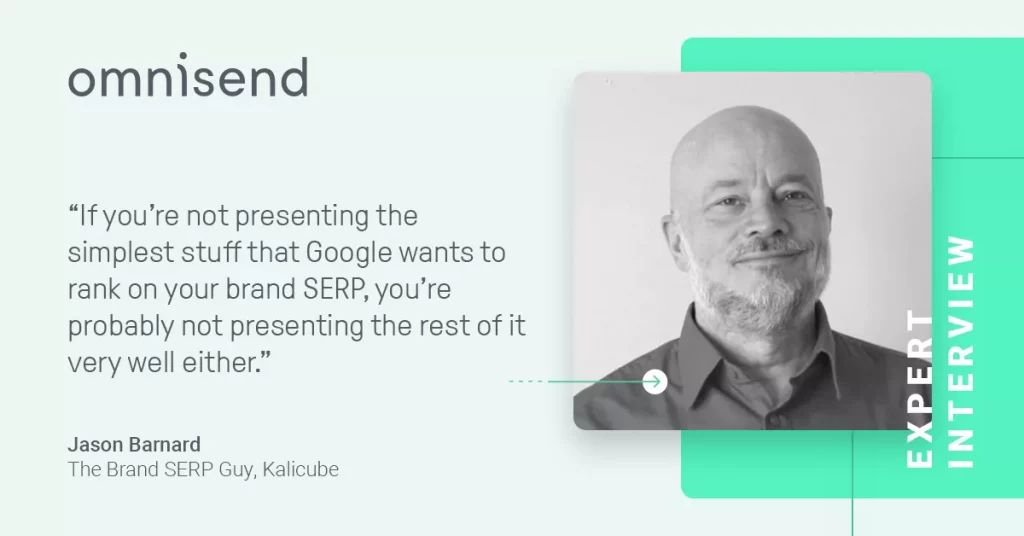
If those rich elements aren’t present on your Brand SERP, it’s because either:
- You don’t have the content.
- You have the content but haven’t presented that content to Google in a way that it understands.
- You haven’t demonstrated to Google that it is helpful and valuable content for your audience when they search your brand name.
If that’s the case, your entire SEO strategy is probably wonky. Because if you’re not presenting the simplest stuff that Google actively wants to rank on your Brand SERP in a way Google understands, you’re probably not presenting the rest of it very well either.
Google isn’t so much a search engine as it used to be. Today, Google is a response delivery service. If you want proof of that, Google the weather. You’ll never have to click on anything because Google will show you the weather for the rest of the week.
You never have to leave that Google SERP. It makes sense to put more resources into getting those rich snippets and dynamic content that will:
- Reflect your brand in a positive way.
- Get the answer the user is looking for to them as quickly as possible.
- Take up as much space on that front page as possible.
Jason Barnard: Controlling the Brand SERP, in particular, is incredibly important. If you’ve produced that content, there is no reason for it not to appear. And, assuming it’s on webpages that you actually control or semi-control, you gain control over your brand message when people Google your brand name.
I think that’s something that’s vastly underestimated. Especially considering that you can use your Brand SERP to actually take your whole SEO strategy a step further.
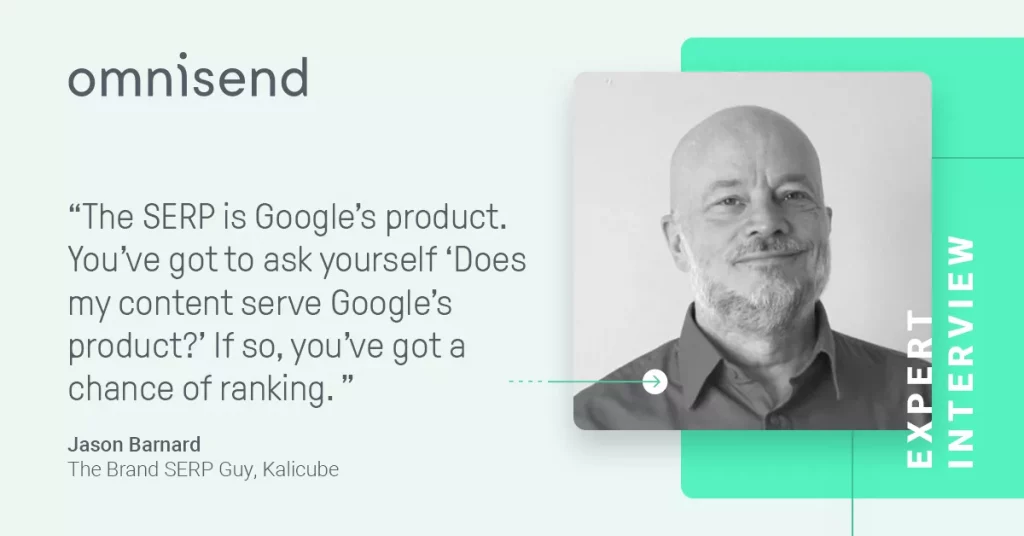
Google’s aim is to bring user satisfaction as quickly and as efficiently as possible. Their product is providing efficient and effective solutions to users’ problems. In that context, You need to ask yourself, does my content serve Google’s product? If it does, I’ve got a chance of ranking. If it doesn’t serve Google’s product, you won’t rank because Google is simply filling its product with your content to satisfy its users.
Your aim is to give your content to Google’s product for free in exchange for visibility and traffic. If you start looking at Google SERP as a product, I think your point of view on what you’re doing in SEO will change.
Jason Barnard (The Brand SERP Guy)
And your aim is to allow Google to use your content in its product for free in exchange for the visibility and the traffic Google gives you. It’s an exchange.
If you start looking at Google SERP as a product and think about how your content serves that product, I think your point of view on what you’re actually doing in SEO will change. You will have a more realistic strategic approach to SEO which I think, for me, is the fundamental base.
SEO tactics are great, but if you don’t have that strategic approach, you’ll lose long term. Ask yourself :
- What am I trying to achieve?
- What is the context?
- Who is my target audience?
Then remind yourself that your audience is a subset of Google’s users, and you’re aiming to convince Google to recommend your content in its product - now you’ve got a great strategic approach.
The Effects of Google’s Core Updates
As marketers, we often have to stay on the pulse of the updates companies like Google, Facebook, and Apple perform. Changes can disrupt strategies, and sometimes full industries, in the blink of an eye.
I asked Jason more about the Google core updates in June and July, the rollbacks that happened in the second update, and what changes brands should look out for.
Jason Barnard: Well, my first thought is nothing unusual there - basically nothing to see, move on. There were big core updates in June and, as with all core updates, they implement the update, they roll it out into the wild. They get all this data, then they measure success and failure. Finally, they tweak their algorithms and then release a corrective update that stabilises the ship, as it were.
That is all about metrics. We would do well to look more at how they are measuring success and failure. That is the crux - not ranking factors. The trick we need to learn is to analyse the metrics of success that the search engines are feeding back into their algorithms because those metrics clearly indicate where they’re trying to go and therefore where we should be aiming.
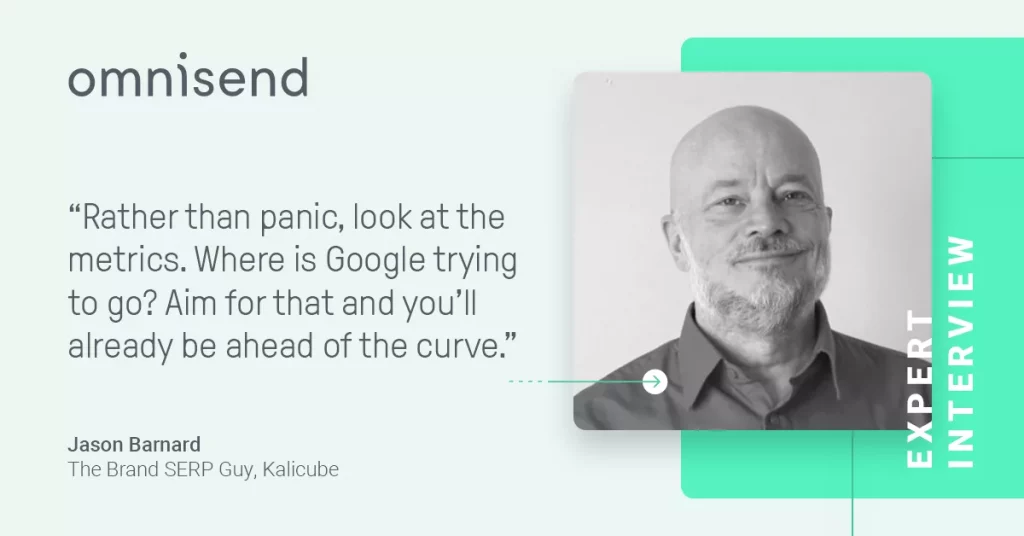
They tweak the machine learning algorithm, and then they pump all this data back in with a tweaked algorithm, saying to the machine “This was good. This was bad.” Then they push that back out into the wild. So basically, as you said, it’s undoing some of the stuff it did in June, but theoretically, it’s undoing the stuff that it didn’t intend to do.
You can always expect that whether it’s the next month, or whether it’s in six months. Last year, there was one in the summer, and then it was slightly undone in December. So you’re always going to have that back and forth.
Rather than freak out and panic about it, look at the metrics. Look where it’s trying to go and aim for that because whether they get there tomorrow, the day after, next week, or next year if you’re already there, you’re just going to have this upwards curve.
Beware of hockey sticks - instead, look for the gentle slope going up. Over a few years, your business is going to build, and you will have this solid basis that won’t get slammed by a core update. You know, you might get a small downtick and then an uptick, but you won’t get the downward shock. I mean, cause the opposite to a hockey stick is obviously that’s black, levelled, ski slope that you don’t want.
How Google is Dealing with Spam: Good News for Good Actors
The second part is there were a couple of spam updates, and I found those very interesting. Obviously, you’ve got all the other content. I mean, maybe it’s 20 billion, decent pages or half-decent pages. But the spam or the rubbish is a phenomenally big problem for them.
What they’ve now done is integrated it into the algorithm to such an extent that they do these updates. What I noticed looking at rank ranger is that the number of sites with HTTPS on page one went up, from something like 95% to 99%. That for me implies that a lot of these spammy sites don’t use HTTPS.
So they’ve actually managed to get rid of an awful lot of spammy sites that didn’t bother installing HTTPS. I suspect that that latest update is possibly a turning point for spam detections and ban management.
I suspect that for honest e-commerce platforms that are creating great content, great descriptions with a good offer and a great service for their clients, this is a good thing. The amount of spam that they’re now competing with is starting to be controlled in that sense, at least, and is starting to go down.
Obviously, there are going to be other problems of the spammy things coming up, but I suspect that that’s kind of cleared a lot of the brush away.
Getting rid of the riffraff, so to speak.
Jason Barnard: There you go.
How Google Core Updates Affect Brand SERPs
So How are Brand SERPs Affected by the Core Updates?
Jason Barnard: In the brand search world, I don’t care with a decent brand and a decent brand SERP, the core algorithms don’t make any difference. Brand SERPs simply don’t change very much at the moment because core algorithms aren’t aimed at those. If you’ve communicated incredibly well, who you are, what you do, and who your audience is, Google will be showing a decent brand SERP and a core update will not tend to affect that a great deal.
If it did, then you have a brand problem. If you look at a brand SERP of somebody who hasn’t been looking after it, it will tend to change over time as Google tries to figure out what’s good because we haven’t explained to it what’s good. We haven’t convinced them that this is what our audience needs to see. This is what’s valuable and helpful to our audience.
Privacy Changes Across the e-commerce and Digital Marketing Industries: How to Stay Ahead of the Curve
Speaking of changes to the digital marketing channels we use in the e-commerce industry, I wanted to ask Jason what merchants could do to stay ahead of the curve.
As marketers, we live in a world where third parties are controlling several of the digital channels we use. Whether it be Google, Facebook, Apple - these companies are constantly updating and changing their policies.
As a user, it’s impossible to keep up. As a marketer, it’s difficult at the absolute best. But it’s a constant job keeping up with what all of these companies are doing and thinking about how it’s going to affect you and the merchants you serve. At Omninsend, we’re focused on the iOS 15 update, which will kill off open rates.
What is your advice for e-commerce merchants trying to keep up with these changes? Is it better to do something that can future-proof, or is it better to just stay reactionary to these kinds of updates?
Jason Barnard: What I was saying earlier really does come into play here: look at the metrics.
What are they trying to achieve? They’re trying to achieve a result that satisfies their user, not yours, their user, as efficiently and effectively as possible. Once again, if you’re creating content that fits into that product, then you’re going to be successful long term. So you need to focus on two things.
One is how you can serve the subset of their users that are your legitimate audience.
Then, you have to serve your audience and your clients as well as you can from a marketing business perspective. Ultimately, Google wants to send its users to a solution that satisfies them, because Google is piggybacking off your great performance. Google looks good if they send their user to a merchant who performs up to and beyond their expectations.

So Google will reward you for satisfying its users. And I was very careful to say, ‘its users.’ Look at the metrics, look at what you’re trying to achieve. Look at what Google is trying to achieve and find where they intersect. Just using that as your foundational base, you should be ready for whatever updates Google has to throw at you.
Google’s fundamental job is to satisfy users in the simplest, most efficient manner possible. It has to understand where you are expert, where you’re authoritative, and that it can trust you.
Jason Barnard, The Brand SERP Guy
Don’t get tempted to go off in different directions - focus on what you do. Don’t think, “I could attract this new audience that might possibly be tangentially interested in what I have to offer.” Focus on the people who are truly going to be well-served by your products because Google rewards that. Google’s fundamental job is to satisfy users in the simplest, most efficient manner possible. It has to understand where you are an expert, where you’re authoritative, and that it can trust you.
Right, interesting. So focus on the core - tried and true is your best bet.
Jason Barnard: Absolutely! Obviously, I’m not saying don’t expand your markets. I’m saying get the core right first and then expand out little by little.
Shaping Google’s Opinion of Your Brand
So What Would be One Mistake You See a Lot of Merchants Making?
Competitive keyword gaps - it’s one of the things I sometimes get pretty annoyed about. Not because it’s a bad thing - it’s a great thing, but not when people kick off their SEO strategy. The first thing some people do is play the “envy” card: they compare themselves to competitors and see where the gaps are - they aim straight for places they don’t perform at all. In the context of focussing on your core strengths, expertise, and audience that we discussed earlier, you can see the disconnect.
For me, the first place to look is Search Console. Look at where you’re already performing reasonably well, but under-capacity, and improve that. Then improve the next layer up, then the next layer up. You’ll find that you’ll get quicker results and that the competitor keyword gap starts to fill itself. Then, after maybe two years, you’ll have nailed all the core user queries, and you can aim for that competitor keyword gap.
But the vast majority of companies and brands doing their SEO, haven’t done that groundwork. Ask yourself, “What is my core? Am I performing there?” If not, start improving there and then build out.
Focusing on the competitive keyword gap at the start of an SEO strategy feeds into people’s natural envy of their competitors. It’s like a horse looking left and right during a race. It will trip itself up. That’s why they wear blinkers: focus on what they are doing, where they are going.
In short, until you’ve sorted out your own house, I’d suggest that you forget about your competitors.
What’s one best practice you wish more brands were doing?
Build from the Brand SERP out. If you want to know:
- What Google understood about you.
- Where you’re weak and where you’re strong.
- What your digital marketing priorities are.
It’s all there in plain sight on your Brand SERP.
So look at your Brand SERP. If it doesn’t reflect your brand message, Google hasn’t understood you. If it doesn’t contain references to your amazing content, best products, and stunning offers, then Google has missed your strengths. Use those insights to set your priorities in your digital marketing strategy.
Which are the big ones that aren’t there? If you’re making these amazing product videos on your product page, but they are nowhere to be seen, then Google has not understood that they’re valuable to your audience. But is that Google’s fault? I’d argue not. You haven’t communicated to Google that these videos are valuable and helpful to your audience, or they’re rubbish videos that aren’t valuable, and you’re wasting your money.
So you can actually look at your Brand SERP and start to see Google’s opinion of the world’s opinion of you
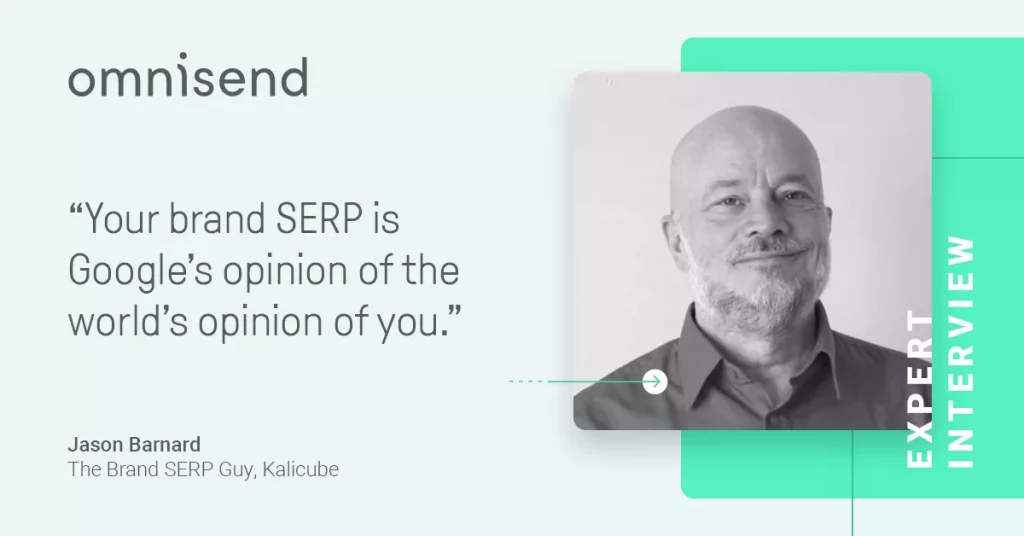
Don’t waste money paying companies to do a market analysis of what your customers think about you, just ask Google. It’s really simple, and it takes three seconds. Literally.
Google sees more of what’s out there on the internet than any other machine or any other company, and what it shows on your Brand SERP is probably the most valuable and relevant reflection of your digital ecosystem you’ll find.
That might well mean making an honest appraisal of the “ugly baby.” In the e-commerce world, that’s often customer reviews. If Google is ranking bad reviews, don’t complain. Why is it ranking them? It thinks those bad reviews are helpful and valuable to your audience. It thinks they are an honest reflection of the world’s opinion of you. Is it? If it is, take the criticism on the chin and sort yourself out. If it isn’t, work to show Google which reviews ARE an honest reflection. It will follow your guidance if you educate it properly. You’d be surprised.
If Google is ranking bad reviews, don’t complain. Why is it ranking them? It thinks those bad reviews are helpful and valuable to your audience. It thinks they are an honest reflection of the world’s opinion of you. Is it? If it is, take the criticism on the chin and sort yourself out.
Jason Barnard (The Brand SERP Guy)
What we often do is go for the safe, easy targets. For example, Trustpilot makes it easy to get loads of great reviews, but if I’m in a niche market of poodle parlours in Paris, the poodle parlour review site would be the one I should be aiming at because it’s incredibly relevant and helpful.
It might be more difficult because people who review on the poodle parlour Paris review site really know their stuff about parlours and poodles in Paris. They’re more difficult to convince - those 5-star reviews are harder to get. But when you do get them, they are significantly more valuable as social proof, more convincing for Google. Working this way, you’re building from your core market outwards. Once again, this “trick” is simply to look at what Google thinks, ask yourself the right questions about that, and start building from your Brand SERP outwards. I think I might have said something similar earlier!
Tools to Use for SEO and Brand SERP
Many people turn to these tools like Moz, SEMrush, and AHREFs for keyword research. Where do your loyalties lie? Or do you recommend a different tool?
Jason Barnard: My starting point is always to take a good, long look at what’s in Search Console. It gives me a good reflection of the site’s performance in Google search, and what Google thinks about my website. I look for the key points, the key markets, and the key sections of my website that I should be focusing on to start with the really useful work.
Beyond that, I like all the tools that you mentioned. I tend to use SE Ranking who are lesser known, just as good and more cost-friendly. It’s got a nicer interface, it’s simpler, and it gets me to my goal quicker than the other tools - they haven’t gone down that path of over-complicating everything trying to serve every single need that I might possibly have as an SEO or a marketer. Simple and effective. Great!
I’ll give you the two other tools. One is obviously my own: Kalicube Pro. It’s a SaaS platform I built that helps you optimise your Brand SERP and manage your knowledge panel. It packages up everything I’ve been talking about with Brand SERPs in a simple task-based process. It launched three months ago, and the results for clients have been astonishing: well beyond what I expected.
Ironically, we’re incredibly niche, and yet universal at the same time since everyone needs this! We track your Brand SERP and knowledge panel, and the platform provides incredibly precise, bespoke advice about your specific case to improve that Brand SERP, and manage the information Google shows in the knowledge panel. As I said already too many times, you can build your entire digital marketing strategy, including your SEO strategy, from the Brand SERP out.
If your Brand SERP looks right, if it accurately represents your brand message and offers in terms of text, content, and visuals, and also in terms of understanding with the knowledge panel, then you’ve got an amazingly good platform to build the rest of your digital and SEO strategy.
On the other hand, if you build your digital strategy, without a solid Brand SERP in place, you’re building a house of cards that’s liable to get blown down by the first gust of core update wind.
How to Speak to Google in Its Own Language
The third tool I love, which is really great for e-commerce, is WordLift. They focus on helping companies build their website around a knowledge graph of what they have to offer. And a knowledge graph sounds really complicated, but it’s just a representation in Google’s native language of your company, the products that you’re offering, and the attributes and details about those products.
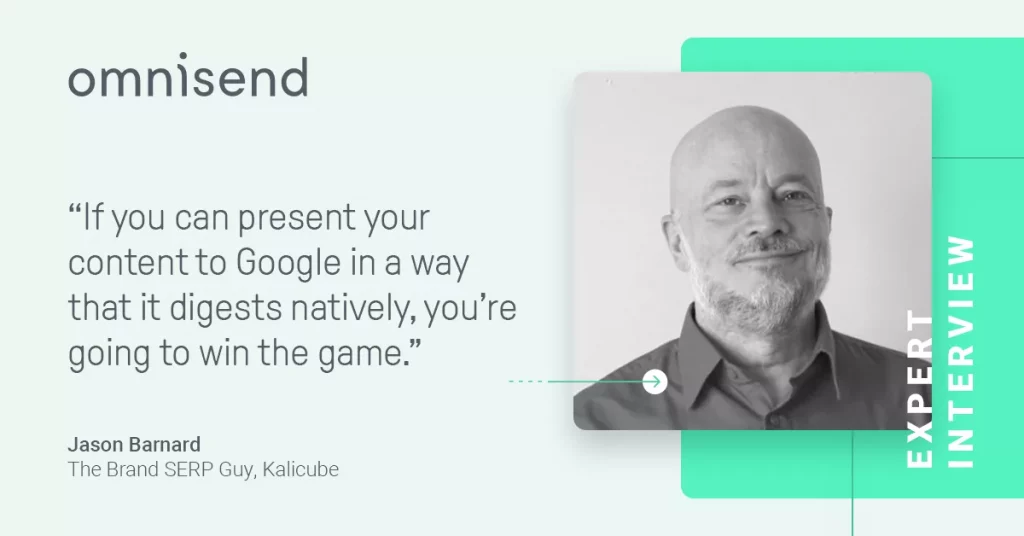
As an e-commerce website, you already have all that information in your database. Technically speaking, pulling that information out, and presenting it to Google in a knowledge graph is probably simpler than presenting it to your users on a web page!
You simply present to Google some extra HTML that reiterates information you already show the user on the page in a format Google can easily digest - in the language it natively uses to understand the world.
It understands the world much like we do as humans - by entities and things such as ontologies, (which are categories), products, the attributes of those products (such as red, big, XL size, etc). So, if you can present your content, and your products to Google in a structured manner, in a language it can digest natively, then you’re going to win the game.
It sounds like this incredibly big job, but there are solutions out there that leverage what you already have in your back office, such as WordLift, who are awesome.
They take this a step further with no extra lifting for you. A lot of these SaaS companies will generate the structured data for Google (called Schema markup) as an end in itself and stop there. Their pitch is to get the little rich snippets in Google’s SERPs, which is terribly pleasing “eye-candy.” Everyone feels terribly pleased that they’ve got the prices and the review stars and all of that stuff.
A lot of these SaaS companies will generate the structured data for Google (called Schema markup) as an end in itself and stop there. Their pitch is to get the little rich snippets in Google’s SERPs, which is terribly pleasing “eye-candy.” Everyone feels terribly pleased that they’ve got the prices and the review stars and all of that stuff. But why stop there? That’s like painting the outside of your house when the walls are crumbling. You’re covering up the cracks, and making it look pretty, but you know it isn’t making the house structurally more sound.
Jason Barnard (The Brand SERP Guy)
But why stop there? That’s like painting the outside of your house when the walls are crumbling. You’re covering up the cracks, and making it look pretty, but you know it isn’t making the house structurally more sound.
What you should be doing is building a solid foundation, which is what WordLift does. They build your internal knowledge graph - your company, the categories, the products, the attributes of those products, and then generate the schema markup from that, present it to Google, and Google digests it natively.
You get the rich snippets, just like everybody else. But you’ve built your entire website using all the same logic that Google is using. You’re future-proofed.
I think we all underestimate vastly what Google is trying to achieve. The task it’s faced with, and WordLift takes one tiny corner of the internet, which is your website, and they organise it for Google. Google is grateful and rewards you.
Sympathy for the Devil: Understanding Google
Do you have any final thoughts or advice for e-commerce marketers looking to improve their SEO?
Jason Barnard: The last point I would make is that structured data is incredibly important and is terribly fashionable right now in SEO circles. But even then its value is sold WAY short.
It works on multiple levels, which most people fail to realise. It’s often simplistically presented to website owners as a way to trigger rich elements in Google’s SERPs (review stars, prices, dates etc). That’s true, and it’s wonderful, but then it’s also a way to communicate with Google more effectively, as I mentioned earlier. But then, Google is smart. It has probably understood much of the information you’re going to be putting in that structured data - but it isn’t confident. What you’re doing with structured data is confirming to Google what it’s probably already understood. That explicit confirmation will significantly increase its confidence in its understanding.
Google is smart. It has probably understood much of the information you’re going to be putting in that structured data - but it isn’t confident. What you’re doing with structured data is confirming to Google what it’s probably already understood. That explicit confirmation will significantly increase its confidence in its understanding.
Jason Barnard (The Brand SERP Guy)
I find it helpful to use the analogy of educating a child. Google is a child.
Think of a child at school. The teacher provides the child with information, and they understand. But critically, the child might have misunderstood some details and isn’t confident in their understanding. To cement that understanding and build that confidence, the teacher communicates the information in several ways, or using several exercises.
Google is that child. You are the responsible adult and you need to educate Google about your company and your offers. You do that by default in the website content you provide to your users. But that is only one explanation, only one “exercise” for Google, the child. Add schema markup as a second explanation that is better suited to the child’s way of learning, and you will have a child who has a more solid understanding and is confident it has correctly understood.
Taking that analogy a little further, when a child first learns something new, they don’t go into the playground and shout it out to everybody because they know they might have got it wrong. But if the teacher explains, then gives them a couple of reinforcement exercises, then their grandmother confirms it, then the father, then the baker next door… They go to the playground, and they shout it with great enthusiasm to anybody who’ll listen.
That’s what Google does. It gets a good, general understanding from your pages, but it isn’t confident. Once it’s confident, it starts shouting about it. If it’s confident in its understanding of your company, your products and your offers, it will shout about it.
That’s what you want. Google as a child, standing in its playground, shouting your name out.
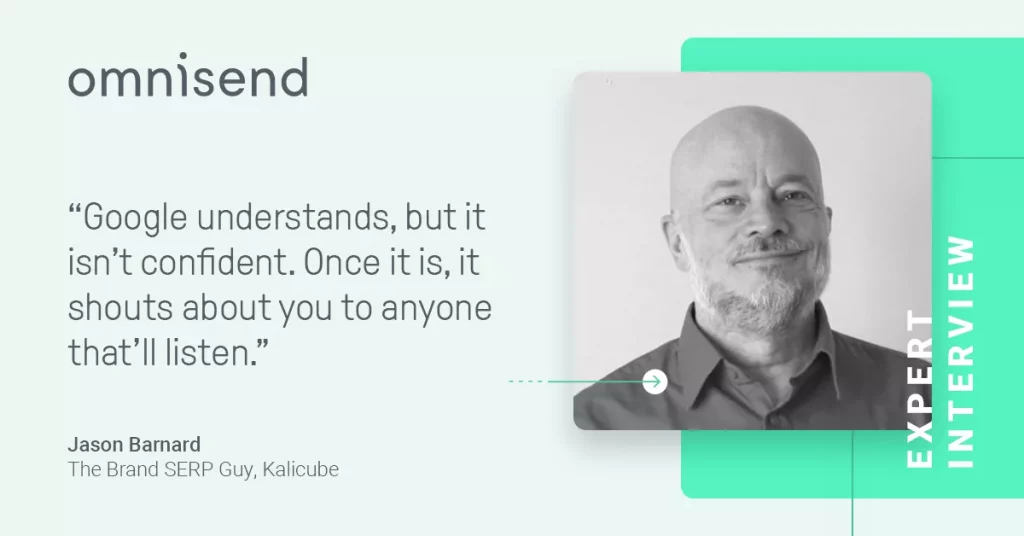
Educating a child takes time, patience, and empathy for the problems they face as they try to digest an entire world of information.
One problem that I’ve had is people saying: “I want simple, one-step practical actions. I want buttons to press that change things today.” I’d suggest that we need to take a big step back and look at this from a different point of view.
One thing we can all usefully do is have empathy for Google. I don’t mean we should have empathy for a massive monopolistic company that makes boatloads of money, I mean, empathy from a point of view of understanding where Google is coming from, what they’re trying to achieve, and what problems they face.
By understanding where Google is “coming from,” you can take advantage of it.
It’s not cheating the system. It’s saying, “What is Google trying to achieve? What are the barriers to what they’re trying to achieve? What are their problems? How can I help Google solve its problems and move them closer to reaching its goals?” When you work from that perspective, you end up helping Google achieve their goal, which is satisfying their user - but with your content, not somebody else’s.
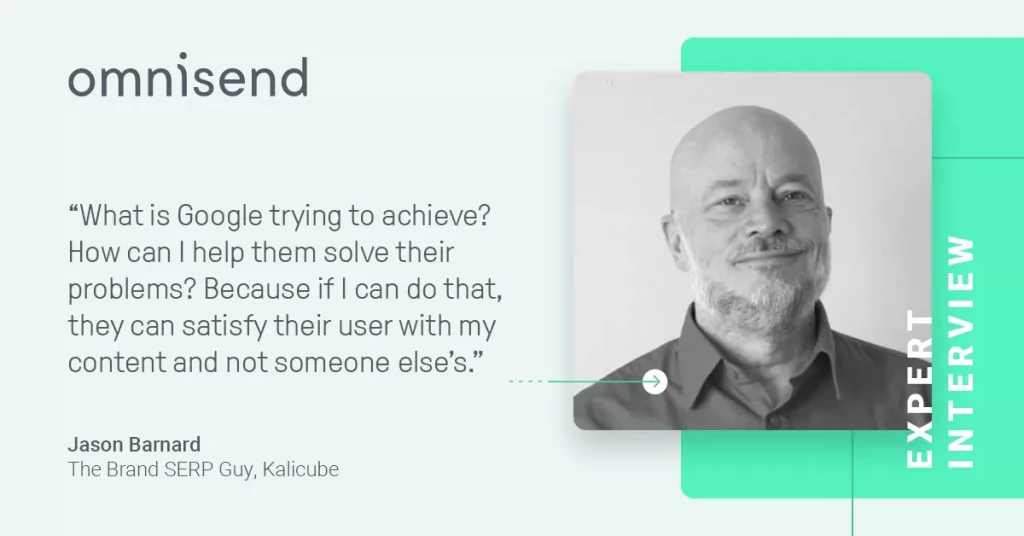
So I’m trying to break those barriers down for Google. That’s what SEO is - it’s breaking down the barriers of your content so that Google can actually perform and achieve its goals with your content.
I broke SEO strategy down into three pillars: understanding credibility and suitability.
The first pillar is understanding: how well does Google understand who you are, what your offers are, and who your audience is. If they have that understanding, the algorithms can then potentially start offering your content as a solution to its users.
Number two: credibility. Are they confident that you are a better solution than the other solutions out there? If so, you become a better candidate as a solution compared to your competitors.
Then the suitability - once it’s understood who you are, what you do, what your offers are, who your audience is, and it’s understood that you’re the most credible solution for its users, then it will evaluate whether your content is a good fit for its “product” (that product being the SERP). You need to make sure your content is suitable for, and suitably packaged for, its product if you want Google to include you.
Those are the three pillars.
In short, Google is looking for the most suitable content for its SERP-product. The goal of that product is to help its users find the best solution to their problems efficiently. So your goal is to help Google achieve its goals, by helping its users achieve their goals.




